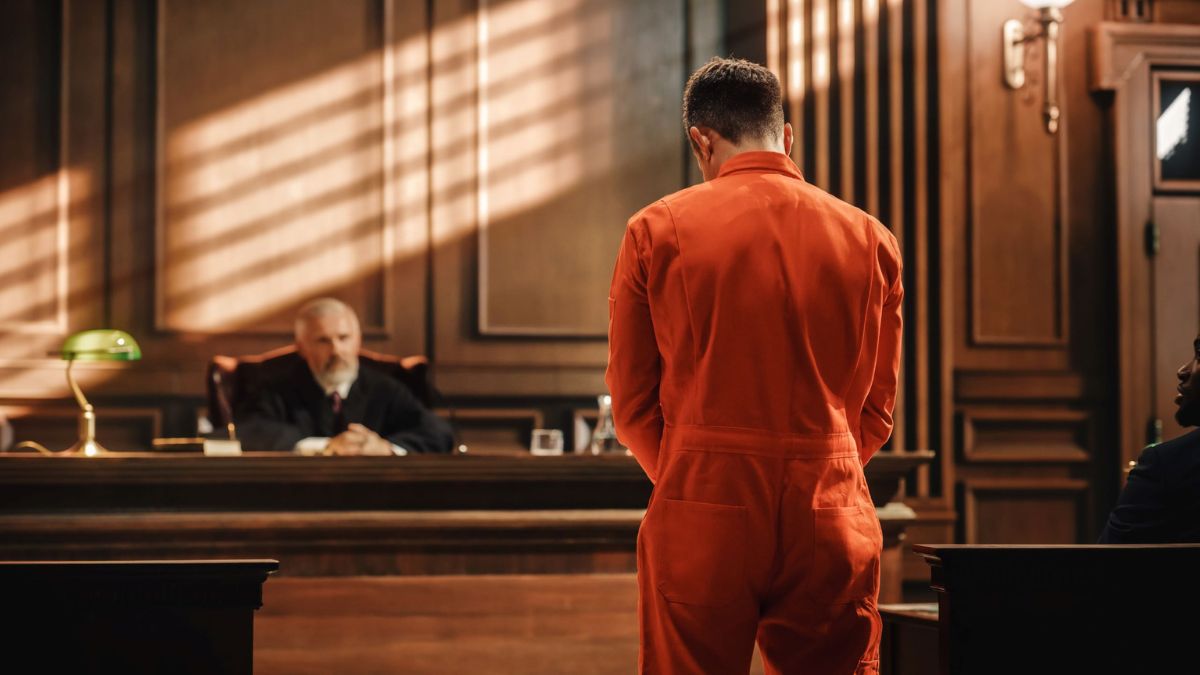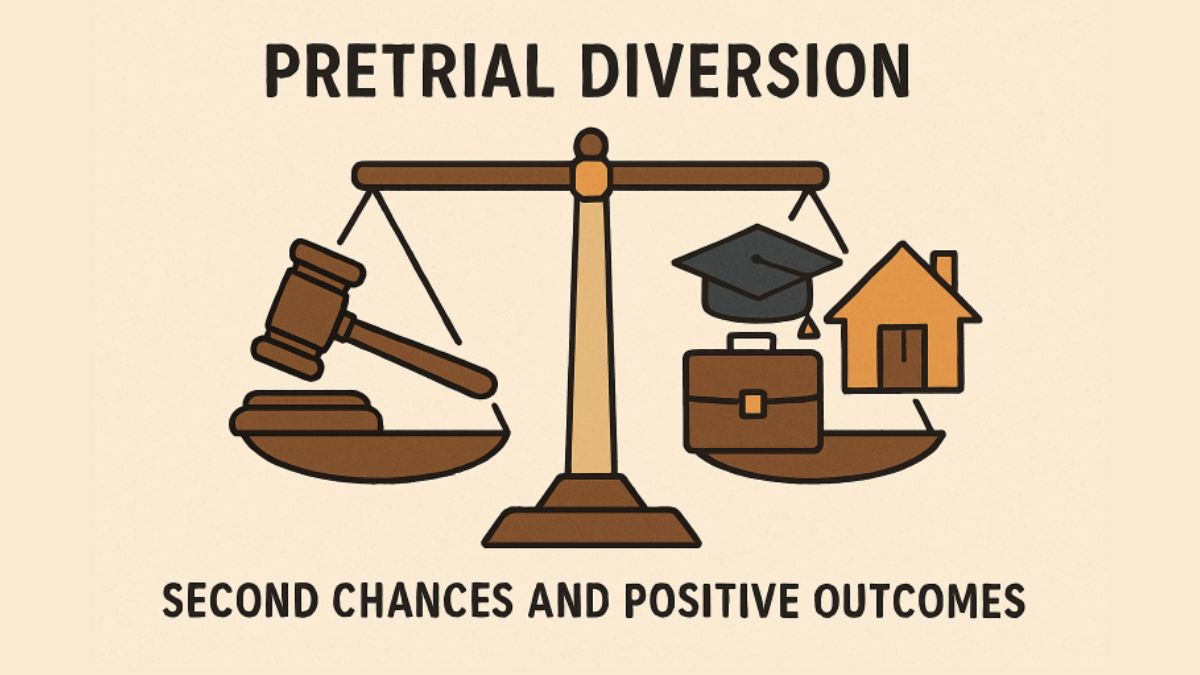LAW
How To Get Criminal Charges Dropped: Insights From Legal Experts

Facing criminal charges can be an overwhelming and life-altering experience. However, not all charges necessarily lead to a conviction. In some cases, charges may be reduced or even dropped, depending on the circumstances and the defense’s strength. By understanding the legal avenues available, defendants can take the necessary steps toward achieving the best possible outcome.
Read on to learn how to get criminal charges dropped.
Understanding the Grounds for Dropping Charges
To have criminal charges dropped, specific legal grounds must be established. Prosecutors can drop charges if they believe the case lacks sufficient merit to proceed to trial. Below are some of the common reasons charges may be dismissed:
- Insufficient Evidence: Prosecutors require a certain level of evidence to prove the defendant’s guilt beyond a reasonable doubt. If the evidence presented is weak or inconclusive, the case may not stand in court, prompting the prosecution to drop the charges.
- Procedural Errors: Law enforcement officials must follow strict procedures when collecting evidence and making arrests. Any violation, such as an unlawful search or failure to read Miranda rights, can render evidence inadmissible, weakening the case.
- Cooperation with Authorities: In some cases, defendants may negotiate with prosecutors by cooperating in ongoing investigations or providing critical information. This cooperation may lead to a reduction or dismissal of charges.
- Mistaken Identity: Charges may be dropped if the defendant can prove they weren’t involved in the alleged crime and mistakenly identified as the perpetrator.
Consulting a qualified legal professional is crucial for navigating these complexities. For example, choosing to hire a San Bernardino criminal defense attorney can provide the expertise required to evaluate your case and develop a robust strategy to challenge the charges.
Remember, legal professionals understand the nuances of criminal law and can identify procedural errors or weaknesses in the prosecution’s case that might lead to charges being dropped.
The Role of a Skilled Criminal Defense Attorney
An experienced criminal defense attorney plays a pivotal role in challenging the prosecution’s case. They analyze every aspect of the charges, from evidence collection and preservation to procedural adherence. Their expertise can also uncover weaknesses that may otherwise go unnoticed.
However, some key responsibilities of a defense attorney include:
- Case Analysis: This includes reviewing all evidence and identifying inconsistencies or errors that weaken the prosecution’s case.
- Negotiations: This involves plea bargaining to negotiate a dismissal or reduction of charges.
- Legal Representation: This means advocating for the defendant in court and presenting compelling arguments to dismiss the charges.
By understanding the role of a skilled criminal defense attorney, you can advocate for your rights to increase your chances of getting your charges dropped.
Strategies to Increase the Likelihood of Dropping Charges

A tailored legal strategy can significantly impact the likelihood of having charges dropped. Here are some common tactics employed by defense attorneys:
Presenting Alibis or Witness Testimonies
Credible alibis or witness testimonies refuting the prosecution’s narrative can undermine their case.
Challenging Evidence
Defense attorneys may question the reliability or legality of evidence. For instance, they might challenge whether a search warrant was properly obtained.
Highlighting Prosecutorial Misconduct
Instances of prosecutorial misconduct, such as withholding exculpatory evidence, can be grounds for dismissing charges.
Filing Pretrial Motions
Motions to dismiss charges or suppress evidence are common legal maneuvers used to weaken the prosecution’s case before trial.
Importance of Timing in Legal Proceedings
The timing of legal actions can be critical when seeking to have charges dropped. Early intervention by a skilled attorney can set the tone for the entire case. Promptly challenging weak evidence or procedural violations can also shift the balance in favor of the defendant.
Moreover, proactive measures, such as completing rehabilitative programs or community service before trial, can demonstrate good faith and encourage prosecutors to reconsider pursuing charges.
Common Misconceptions About Dropping Charges
Many individuals believe that criminal charges are dropped solely based on innocence. While innocence is a factor, other legal and procedural elements often play a more significant role. Below are some misconceptions:
“All evidence is admissible in court.”
Evidence obtained unlawfully or without proper documentation can be excluded, weakening the prosecution’s case.
“Dropping charges means the case is closed forever.”
In some instances, charges may be refiled if new evidence emerges, or procedural errors are corrected.
“Only the victim can drop charges.”
While victims can request charges to be dropped, the decision ultimately lies with the prosecutor.
When to Seek Legal Assistance
If you’re facing criminal charges, seeking legal counsel immediately is imperative. Experienced attorneys can assess the merits of your case, advise you on the best course of action, and advocate on your behalf. A competent legal team can also distinguish between a dismissal and a conviction.
Final Thoughts
Understanding how to get criminal charges dropped requires a thorough knowledge of the legal system, evidence evaluation, and procedural standards. Hiring a skilled attorney is a critical step in building a strong defense. By keeping the information mentioned above in mind, you can significantly improve your chances of achieving a favorable outcome.
LAW
Common Charges Eligible for Pretrial Diversion in Georgia

Introduction to Pretrial Diversion Programs
In Georgia, pretrial diversion programs offer first-time, non-violent offenders an opportunity to address criminal charges without undergoing full prosecution. Designed to keep individuals out of the traditional court system, these programs aim to reduce repeat offenses while allowing participants to demonstrate responsibility. Anyone interested in protecting their future after a qualifying arrest can consult with an attorney, such as Brian Hobbs Law, to better understand these opportunities.
Pretrial diversion is not a “get out of jail free” card. Individuals must complete various requirements, but these programs can ultimately protect participants from the long-lasting negative impacts of a criminal conviction. As Georgia courts continue to emphasize rehabilitation over punishment for certain offenses, pretrial diversion is becoming an increasingly essential resource in the justice system.
Admission to these programs can profoundly impact an individual’s life—success may lead to the expungement of charges, while failure to comply can result in the reinstatement of prosecution. Understanding eligibility and local program options is vital for anyone facing relevant charges.
Additionally, staying informed about state-level criminal justice reforms through resources like the ACLU’s coverage on criminal law reform helps individuals fully understand their rights and legal alternatives in Georgia.
Eligibility Criteria for Pretrial Diversion
Pretrial diversion isn’t available to everyone charged with a crime. In general, eligible participants must meet the following requirements:
- No prior criminal convictions or significant juvenile record
- The current charge must involve a non-violent offense
- The accused must be willing to accept the terms imposed by the diversion program
Each county in Georgia can establish its own specific criteria, allowing requirements to vary depending on the location. Some counties also exclude particular types of offenses or individuals with previous participation in diversion programs. It’s wise to consult local guidelines or a defense attorney to confirm eligibility for any specific case. Further details on eligibility can also be found through resources at larger publications, such as the Nolo legal guide to Georgia’s pretrial diversion programs.
Common Offenses Eligible for Pretrial Diversion
Pretrial diversion programs in Georgia primarily address low-level, non-violent offenses—typically those that arise from isolated instances of poor judgment or youthful mistakes. Standard eligible charges include:
- Shoplifting: Incidents involving minor theft, especially first offenses, often qualify.
- Possession of Marijuana: Cases that involve small amounts of marijuana for personal use are frequently considered.
- Minor in Possession of Alcohol: Underage individuals facing alcohol-related charges may be diverted from traditional prosecution.
- Disorderly Conduct: Non-violent public disturbances, such as public intoxication or disruptive behavior, are regularly included in diversion programs.
While these offenses are the most common, every county in Georgia evaluates charges according to its own standards. Some counties may offer diversion for additional charges, such as vandalism, criminal trespass, or fraudulent checks, on a case-by-case basis.
County-Specific Programs and Requirements
Differences persist across Georgia in how pretrial diversion is administered. For example:
- Cobb County: Focuses on young people and adults accused of non-violent misdemeanors. Program requirements might include attending educational workshops, performing community service, submitting to drug screens, and paying restitution where appropriate. Learn more about Cobb County’s program.
- Cherokee County: Targets first-time offenders with qualifying charges such as minor alcohol possession or possession of less than one ounce of marijuana. Participants may need to undergo substance abuse assessments, complete community service hours, and engage in appropriate counseling or educational classes—details on Cherokee County’s program.
While most Georgia counties offer some form of pretrial diversion, it is essential to contact the District Attorney or Solicitor General’s office or seek legal counsel to clarify program specifics within your jurisdiction.
Benefits of Completing a Pretrial Diversion Program
Completing a pretrial diversion program in Georgia brings substantial rewards:
- The original charges are dismissed by the prosecution, clearing participants of criminal liability.
- Expungement or restriction of the criminal record may become possible, helping keep future background checks clean.
- Participants avoid the stigma and consequences that accompany a criminal conviction, improving their prospects for employment, education, and housing.
These advantages can transform the lives of participants by providing them with a genuine, fresh start after a legal setback.
Challenges and Considerations
Despite their apparent benefits, pretrial diversion programs are not without hurdles:
- Strict compliance is required. Failure to meet program conditions—such as missing appointments, failing drug tests, or neglecting community service—can result in immediate prosecution.
- Potential financial costs: Fees for program participation, drug testing, educational courses, and restitution may be financially burdensome for some defendants.
- Limited access: Not all offenses or individuals qualify, and some counties may have few or no established diversion programs available.
Fully understanding the obligations, timeframes, and potential costs before enrolling is crucial for making an informed decision about program participation.
Conclusion
Pretrial diversion programs in Georgia represent a powerful alternative for eligible individuals to avoid the lifelong consequences of a criminal conviction. By focusing on rehabilitation rather than punishment, these programs provide an opportunity for individuals to take responsibility and move forward productively. Staying informed about local rules, available resources, and program obligations is essential to maximizing the benefits of this second chance.
LAW
Unique Considerations in Same-Sex Divorce Cases in New Hampshire

Divorce is never an easy process, but for same-sex couples in New Hampshire, the journey can present additional challenges tied to both changing legal precedents and societal attitudes. Whether it’s dividing assets accumulated before marriage or ensuring both parents retain the right to raise their children, these unique considerations make it vital for individuals to seek experienced counsel. Working with a law firm like Turco Legal, P.C. can ensure your rights are protected during every stage of the process. New Hampshire has seen significant advancements in same-sex marriage and divorce laws over the last decade, but the impact of historical inequities remains substantial in today’s divorce cases. Understanding how the laws have evolved and what specific issues can arise for same-sex couples is the first step in safeguarding your interests and your family’s future.
Legal Recognition and Historical Context
Same-sex marriage became legal in New Hampshire in 2009, setting a new standard for the equal recognition of marriage. However, many couples shared lives and assets long before the state recognized their union. In 2016, the New Hampshire Supreme Court ruled that courts should consider the length of cohabitation, acknowledging the true duration of these long-standing partnerships. This is crucial when the court evaluates property division, as years spent building a life together before legalization now carry weight legally, too.
Adultery and Fault-Based Divorce
Until just a few years ago, New Hampshire law excluded same-sex extramarital affairs from its definition of adultery. This changed in 2021, when the New Hampshire Supreme Court expanded the law so that an affair with a same-sex partner can now serve as valid grounds for a fault-based divorce. This legal evolution ensures more equitable treatment for all couples, regardless of sexual orientation. This adjustment reflects the progression of family law in the state and offers same-sex couples the same considerations as their opposite-sex counterparts (Lothstein Guerriero, PLLC).
Division of Property and Assets
New Hampshire applies the equitable distribution principle in divorce proceedings, aiming for a fair, though not necessarily equal, allocation of marital assets. For same-sex couples, problems can arise when the relationship began before their marriage could be legally recognized. The courts may consider the entirety of the relationship—including premarital cohabitation—when dividing property, addressing the long-term partnership’s reality. This approach is designed to avoid unfairly penalizing couples for historical legal inequities regarding marriage recognition.
Parental Rights and Child Custody
Child custody remains one of the most sensitive and challenging issues in any divorce, but the situation is often more complex for same-sex couples. If both partners have not pursued legal adoption, a non-biological parent may face hurdles in securing custodial rights. Legal adoption is strongly recommended for non-birth parents to ensure their parental rights are respected during divorce proceedings. This can prevent emotionally and legally taxing disputes over the care and custody of children who view both parents as parents.
Alimony Considerations
While alimony in same-sex divorces generally follows the same legal criteria as those in opposite-sex divorces—including factors like financial need, contributions to the household, and duration of the relationship—historical factors can complicate these calculations. Courts are increasingly willing to consider the length of the couple’s entire relationship, including premarital cohabitation, rather than just the legal marriage, when determining appropriate alimony awards. This can create a more equitable financial outcome for both parties.
Emotional and Social Challenges
In addition to legal and financial complexities, same-sex couples may encounter social stigma or a lack of understanding from family, friends, or even legal professionals unfamiliar with the nuances of LGBTQ+ relationships. Counseling, community support groups, and lawyers experienced in LGBTQ+ family law can provide necessary help. Leveraging this type of support can make a significant difference for those seeking a fair and respectful resolution to their divorce.
Conclusion
Navigating a same-sex divorce in New Hampshire involves distinct legal and emotional complexities. Understanding how prior and current laws may affect property division, child custody, and alimony protects your interests and those of your family. Seeking out supportive legal counsel and community resources can help individuals traverse these difficult transitions while maintaining dignity and achieving equitable outcomes for all involved.
LAW
Tuckbeardlaw.com: The Modern Legal Landscape in a Digital World

In today’s rapidly evolving legal environment, finding reliable and transparent legal resources online has become increasingly important. Many individuals and businesses now turn to professional websites to understand legal services before taking the next step. One such digital presence that reflects this growing trend is tuckbeardlaw.com, a name that represents professionalism, clarity, and client-focused legal insight. As law firms continue to adapt to modern expectations, platforms like this demonstrate how digital accessibility and legal expertise can work together seamlessly.
The role of a law firm website is no longer limited to listing contact details. Instead, it serves as a gateway to trust, credibility, and informed decision-making. With the rise of online research, potential clients expect detailed explanations, transparent processes, and a clear understanding of legal services. This shift has placed greater responsibility on legal platforms to deliver both accuracy and accessibility.
Understanding the Purpose of tuckbeardlaw.com in Legal Representation
The primary objective of tuckbeardlaw.com revolves around providing a structured and informative overview of legal services while maintaining a professional tone that resonates with clients. In the modern legal ecosystem, individuals often begin their legal journey online, searching for guidance before consulting a professional. A well-designed platform bridges the gap between legal complexity and client understanding.
Legal websites now focus on educating visitors as much as promoting services. This educational approach helps clients feel more confident and prepared. A strong digital presence allows a law firm to communicate its values, experience, and approach in a way that traditional methods cannot easily achieve.
To better understand how such platforms function, the table below highlights the key elements commonly found in professional legal websites and their purpose within the client journey.
| Website Element | Role in Client Experience | Impact on Trust |
| Informative Content | Explains legal concepts clearly | Builds confidence |
| Clear Navigation | Helps users find services easily | Reduces frustration |
| Professional Design | Reflects credibility and expertise | Enhances reputation |
This integration of structure and information helps ensure that visitors gain clarity from their first interaction.
The Importance of Digital Presence in Modern Law Practices
The legal industry has traditionally relied on word-of-mouth and physical offices, but digital transformation has reshaped this approach. Law firms that invest in strong online platforms are more likely to connect with a broader audience. tuckbeardlaw.com reflects this evolution by emphasizing clarity, accessibility, and professionalism.
A well-maintained legal website allows potential clients to explore services at their own pace. This self-guided experience reduces uncertainty and helps users identify whether a firm aligns with their needs. In an era where time is valuable, digital platforms offer immediate access to essential information.
The following table illustrates how digital legal platforms compare to traditional methods in terms of accessibility and efficiency.
| Aspect | Digital Legal Platforms | Traditional Legal Methods |
| Accessibility | Available 24/7 online | Limited office hours |
| Information Depth | Detailed explanations | Often brief consultations |
| Initial Engagement | Self-guided exploration | Appointment-based |
This comparison highlights why modern clients increasingly prefer digital-first legal interactions.
How tuckbeardlaw.com Enhances Client Understanding
Legal matters can often feel overwhelming due to complex terminology and procedures. One of the strengths of tuckbeardlaw.com lies in its focus on simplifying legal concepts without compromising accuracy. By presenting information in a structured and approachable manner, it helps users feel informed rather than intimidated.
Clear explanations foster trust and reduce misunderstandings. When clients understand their options, they are more likely to engage confidently with legal professionals. This approach benefits both parties, as informed clients can communicate their concerns more effectively.
The educational role of legal websites also supports transparency. By outlining processes and expectations, platforms reduce uncertainty and help clients prepare for legal proceedings with realistic expectations.
Transparency and Trust in Online Legal Platforms
Trust is a cornerstone of any legal relationship, and online platforms must work harder to establish it without face-to-face interaction. tuckbeardlaw.com emphasizes transparency through clear communication and structured content. This transparency reassures visitors that the firm values honesty and professionalism.
A transparent website often includes explanations of legal services, procedural insights, and an overview of how cases are handled. These elements allow clients to evaluate a firm before initiating contact, creating a sense of control and confidence.
The table below outlines key trust-building factors commonly associated with professional legal websites.
| Trust Factor | Description | Client Benefit |
| Clear Language | Avoids unnecessary jargon | Better understanding |
| Consistent Messaging | Aligns values across pages | Reliability |
| Informative Structure | Guides users logically | Reduced confusion |
Such features collectively contribute to a positive user experience and stronger client relationships.
The Role of User Experience in Legal Websites
User experience has become a critical factor in determining the effectiveness of a legal website. Visitors expect intuitive navigation, fast loading times, and well-organized content. tuckbeardlaw.com reflects these expectations by focusing on usability and clarity.
A positive user experience ensures that visitors can find relevant information without frustration. When content is easy to navigate, users are more likely to stay longer and explore multiple sections. This engagement increases the likelihood of meaningful interaction with the firm.
Good design is not merely aesthetic but functional. It supports readability, guides attention, and reinforces credibility. In the legal field, where trust is paramount, these design principles play a vital role.
Legal Information Accessibility and Client Empowerment
Access to accurate legal information empowers individuals to make informed decisions. tuckbeardlaw.com contributes to this empowerment by offering structured insights that help users understand their legal position. Empowered clients are more confident, prepared, and proactive in addressing legal challenges.
By breaking down complex topics into understandable sections, legal websites support learning without overwhelming the reader. This balance between depth and clarity is essential for maintaining engagement while delivering value.
The empowerment provided by accessible legal information also promotes fairness. When individuals understand their rights and options, they can approach legal matters with greater assurance and clarity.
How tuckbeardlaw.com Reflects Professional Legal Standards
Professionalism in the legal field extends beyond courtroom conduct. Online representation must reflect the same standards of ethics, clarity, and responsibility. tuckbeardlaw.com demonstrates this by maintaining consistent tone, structured content, and a client-centric approach.
Professional legal websites often act as an extension of the firm’s identity. They communicate values, expertise, and commitment to service. This alignment between online presence and professional standards strengthens credibility.
Consistency across digital platforms ensures that clients receive the same message regardless of how they interact with the firm. This consistency reinforces trust and reliability.
The Future of Legal Services and Digital Platforms
As technology continues to advance, legal services will increasingly integrate digital tools and platforms. Websites like tuckbeardlaw.com represent an important step in this direction by prioritizing accessibility and clarity. The future of legal services will likely involve greater emphasis on online resources, virtual consultations, and digital documentation.
Clients will continue to expect convenience and transparency. Legal platforms that adapt to these expectations will remain competitive and relevant. This evolution does not replace traditional legal expertise but enhances its reach and effectiveness.
Digital platforms also open opportunities for innovation. From interactive resources to streamlined communication, the future holds significant potential for improving the client experience.
Why tuckbeardlaw.com Matters in Today’s Legal Environment
In an era where first impressions are often digital, the importance of a well-structured legal website cannot be overstated. tuckbeardlaw.com stands as an example of how legal professionals can communicate effectively with a modern audience. By focusing on clarity, trust, and accessibility, it aligns with the evolving expectations of clients.
The value of such platforms lies not only in promoting services but in educating and empowering users. This approach fosters stronger relationships and more informed decision-making. As legal needs become more complex, accessible resources will play an increasingly vital role.
Ultimately, a professional legal website serves as both an introduction and a guide. It reflects the firm’s commitment to excellence and its dedication to serving clients in a transparent and approachable manner.
Conclusion
The legal landscape is undergoing a significant transformation driven by digital innovation and changing client expectations. Platforms like tuckbeardlaw.com illustrate how law firms can adapt by combining professional expertise with accessible online communication. Through clarity, transparency, and user-focused design, such platforms enhance trust and understanding.
As more individuals turn to online resources for legal guidance, the importance of well-structured and informative websites will continue to grow. By embracing these principles, legal professionals can ensure they remain relevant, trustworthy, and effective in a digital-first world.
-

 TOPIC1 year ago
TOPIC1 year ago7 Expert Tips For Choosing The Best Basement Renovation Companies
-

 TOPIC6 months ago
TOPIC6 months agoWhy Greece Katz Martian Has Everyone Talking in 2025
-

 BUSINESS8 months ago
BUSINESS8 months agoTop 5 Features of Sowix Online That Every User Should Know About
-

 TOPIC7 months ago
TOPIC7 months agoTop Features of BetterThisWorld .com You Need to Know About
-

 FINANCE11 months ago
FINANCE11 months agoHow TraceLoans Can Simplify Your Finances
-

 TOPIC1 year ago
TOPIC1 year agoWhy Large Waterproof Outdoor Rugs Are Essential for All Outdoor Spaces
-

 BIOGRAPHY11 months ago
BIOGRAPHY11 months agoFrom Reality Star to Business Mogul: Prince Narula Digital PayPal
-

 FASHION1 year ago
FASHION1 year agoHow to Layer Your White Dress for Cold Weather?
